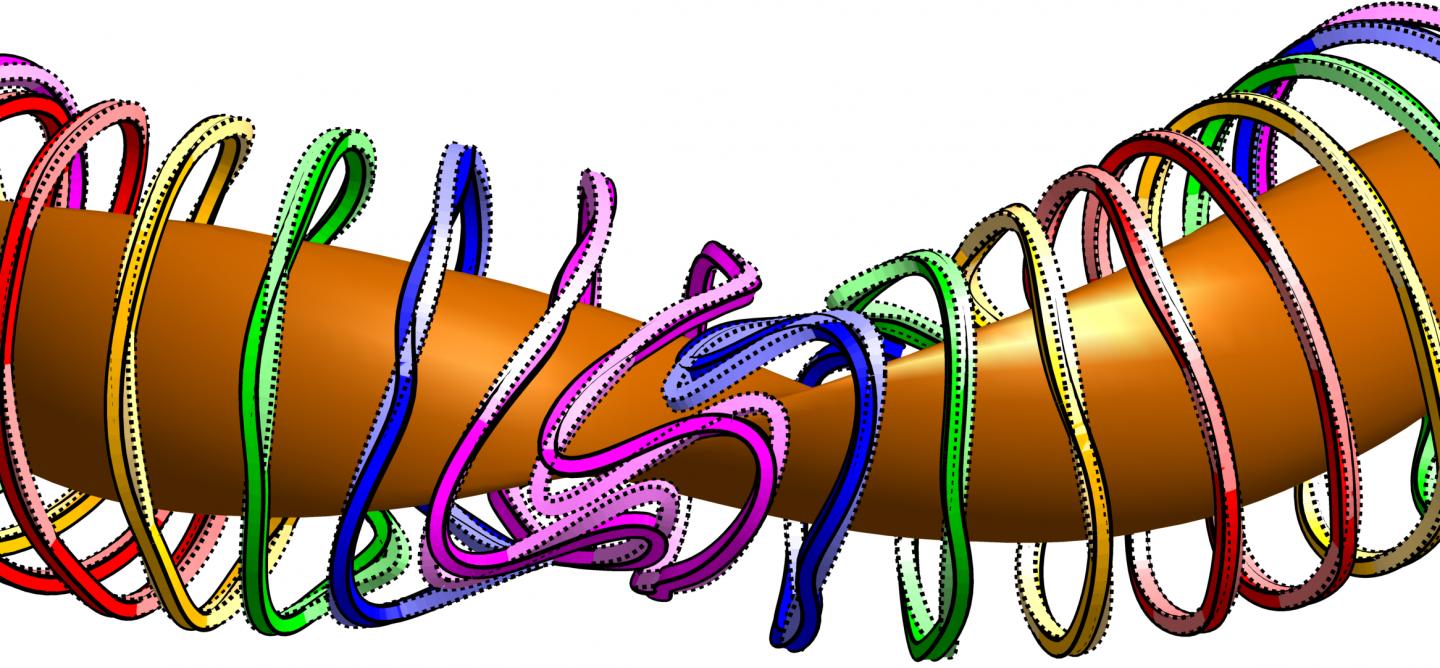
Stellarators are the neglected side of nuclear fusion. Confining and squeezing a hot plasma using magnetic fields, they belong to the same category as the more familiar tokamak, but while these are shaped like a flat torus with a cross-section closer to a D than an O, stellarators have a twisted geometry so that a particle travelling around the ring describes a loose torus, rather than staying within a plane. They have advantages for plasma stability, but the shape of the magnets needed to generate the confining field is very complex. Because of this, there are relatively few stellarators in operation; although as reported in The Engineer, the largest yet built, W7-X, began operation in Germany late in 2015.
Physicist Matt Landreman of the University of Maryland has devised a new way to design the magnets for a stellarator. One problem with the current approach, he explained, is that design tends to start with the shape of the magnetic field, and a variety of coil geometries can produce this shape. “Most designs, including W7-X, started with a specifically shaped magnetic field to confine the plasma well. Then the designers shaped the coils to create this magnetic field,’ he said. This has tended to result with coils placed too close together for easy access to the plasma chamber within them, making it difficult to maintain the machines or even to place sensors to monitor the condition of the plasma.
The software currently used to design stellarators is known as NESCOIL (Neumann solver for fields produced by external coils). Landreman has refined this into a new version he calls regularised NESCOIL, or REGCOIL. In a paper in the journal Nuclear Fusion, he explains that REGCOIL works by considering the spacing between coils in tandem with the shaping of the magnetic field. This, he claims, produces a more robust stellarator design with more space between the coils at the first try.
"In mathematics, we'd call stellarator coil design an 'ill-posed problem,' meaning there are a lot of potential solutions. Finding the best solution is highly dependent on posing the problem in the right way," Landreman said. "REGCOIL does exactly that by simplifying coil shapes in a way that the problem can be solved very efficiently."
However, Landreman stressed, stellarators are still in their infancy as engineering designs, and demand so many compromises in their design that there is unlikely to ever be a standard version. REGCOIL represents a way of reducing design time and cost and will help engineers model design options more easily, he believes.




Glasgow trial explores AR cues for autonomous road safety
They've ploughed into a few vulnerable road users in the past. Making that less likely will make it spectacularly easy to stop the traffic for...